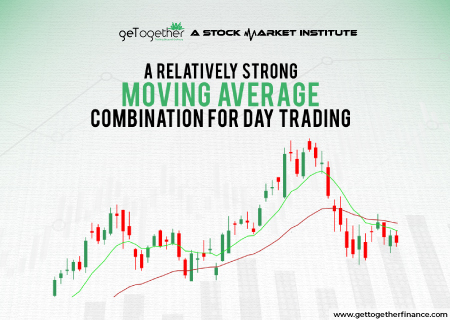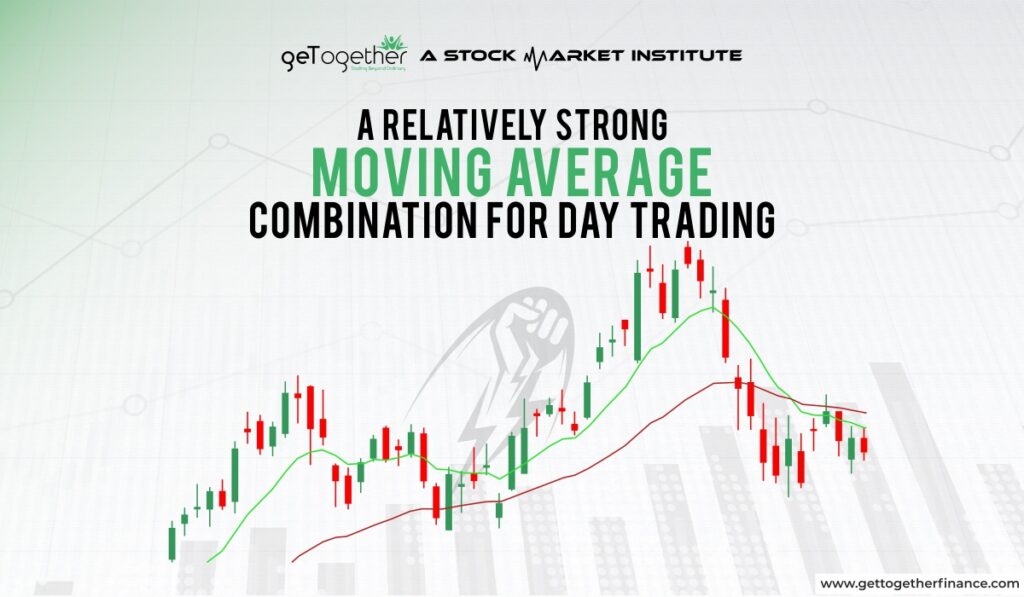A Relatively Strong Moving Average Combination for Day Trading
- February 4, 2025
- 9551 Views
- by Manaswi Agarwal


In Day trading, moving averages play a major role to guide traders about the trend in a security. A trend can be downwards, upwards or sideways in the market. But how do you identify the trend direction? A simple technical indicator called moving averages helps in trend identification for day trading. Let us deep dive and know the strong combination of moving averages:
What is Moving Averages?

In the financial markets, moving average is one important technical tool used in trading strategies with the help of which traders execute their decisions. Making a choice of a right moving average adds credibility to technical based strategies to define profitable approaches. To know the correct combination of moving averages to be used in day trading, firstly get comfortable with the various types of moving averages.
Types of Moving Averages

Some widely known moving averages used by the traders for trend identification are:
Simple Moving Averages
SMA is simple to calculate as it considers the average price of an asset by the number of periods in a particular range. The major con of using SMA is that it considers all periods equally and does not tend to reflect the most recent happenings in an asset. For example; to calculate a 200-day moving average, all days are taken equally ignoring the recent happenings.
Exponential Moving Averages
EMA considers the lags of simple moving averages as it follows recent prices of the security. It is comparatively more reactive than SMAs as it first calculates the SMA and then finds a multiplier. For example, in a 200-day EMA, recent data trends have more weight compared to the one that happened 200 days earlier.
Weighted Moving Averages
Weighted moving average discounts the weight of the ‘ancient’ price of an asset. It adds more weightage to the recent data and less weightage to data points in the distant past. It is ascertained by multiplying each number in the data set to the pre assigned weight and summing up the resulting values.
Smoothed Moving Averages
The main agenda of using this moving average is to reduce the noise of simple moving averages. It represents the EMA that applies for a longer period of time. It considers all the available data series into account considering the historic prices as well as the recent data.
Combination of 9-EMA, 21-EMA, and 50-SMA

9 EMA defines the short-term price movement to quickly identify the intraday shifts in price direction. Traders combine this moving average with the 21-Exponential moving average that determines the intermediate period filter for trends. This trend gives a confirmation in the sustainability of short-term trends. And, 50 EMA gives a broader perspective of trend direction which acts as a key support and resistance level during intraday price shifts.
The combination of these three moving averages is mainly considered by traders to recognize trend shifts for a short term. This combination has worked for many because traders can spot immediate opportunities and quickly react to price changes as per the movement of 9-EMA.
On the other hand, 21-EMA smooths out short term noise that provides a better context for trend direction that supports the trend change in 9-EMA as well as 50-SMA filter false signals during intraday movements.
Combination of Strong Moving Averages

SMA 50: Simple moving average of 50 period helps to identify the trend direction in a broader sense.
EMA 50: Exponential Moving Average prioritizes the recent data to filter out the noise present in SMA 50 period.
EMA 20: 20-EMA reacts quickly to the change in trend as compared to EMA 50 as it removes the extra noise of the longer time period.
How to use Moving Averages?

EMA is mainly used as an additional support trades based on the demand and supply zones as it is the main factor to consider. Traders use different combinations of moving averages as per their trading style.
9-21 EMA: The combination of 9 EMA and 21 EMA is used for scalping by traders as it considers the very short time frame. The combination is applied with demand and supply zones because traders can only mark their entry on a demand zone that have the potential to push the prices.
20-50 EMA: Generally, swing traders use 20 and 50 EMA wherein medium time frame is considered with historical data. These EMA signifies the trend considering the past data and gives an idea to make the position. Actual trades are executed based on the demand and supply zones.
To get the best results in intraday trading, you must use the combination of moving averages in respect to volume analysis, demand and supply zones. If you are going for short term trades, focus on 5 or 9 EMA that helps in scalping with faster decision-making processes.
Analyze the moves through back testing at the demand and supply zones to adapt it better according to your preferred trading style.
Benefits of using Moving Averages for Day Trading

As a strong technical tool, moving averages helps in trend identification for traders at the same time, it also acts as a dynamic support and resistance levels. Moving averages determine whether the prices tend to move upwards or downwards. It generates strong trading signals when used with moving averages of varying time periods.
Crossover Strategy
Moving averages generate buy/sell signals through golden crossover or death crossover signifying bullish or bearish sentiment respectively. Traders buy at golden crossover and sell at the formation of death crossover.
Flexibility
Traders have the choice to use the time period of moving averages as per their trading strategies. They have the flexibility to pick trades based on short-term moving averages i.e. 5,9,20, etc EMA and longer moving averages, for eg., 50,100.
Drawbacks of using Moving Averages for Day Trading

As one of the powerful tools in trend analysis among technical indicators, moving averages has some of its drawbacks which are as follows:
Subjectivity
Technical indicators are always prone to subjectivity as there is no existence of “correct” setting for moving averages.
Varying Results
The trend might appear different on different time frames, suppose on the daily time frame, if there is an uptrend, in the same chart when considering the weekly time frame, a downtrend might appear. This leads to confusion among traders if they are not clear about the time frames that they want to consider.
Over Reliance
It is hazardous for traders to completely rely on a single technical indicator for their analysis, they must use appropriate demand and supply theory to get better results.
FAQs
What does a Moving Average indicate?
A moving average is a technical analysis tool that removes the extra noise and specifies the overall trend direction of a financial instrument over a specific period.
What is a Golden Crossover and Death Crossover?
Golden Crossover indicates a bullish momentum in the financial instrument, while death crossover is the representation of bearish sentiment in the security.
What type of moving averages should be considered in Day trading?
In day trading. You can consider the combination of 20-50 EMA, 50 SMA moving averages that determines the overall trend direction driving the price action.
How does SMA differ from EMA?
SMA or the simple moving averages consider all data points equally, while EMA gives more weightage to recent price movements.
Are moving averages reliable?
Moving averages are focused to identify the trend of the security, traders must depend on a stronger approach which is the demand and supply to make trading successful.
Is it important to use moving averages in day trading?
In day trading, moving averages helps to determine the direction of the security and hence acts as an additional support for scalpers and swing traders.



 Instagram
Instagram 
